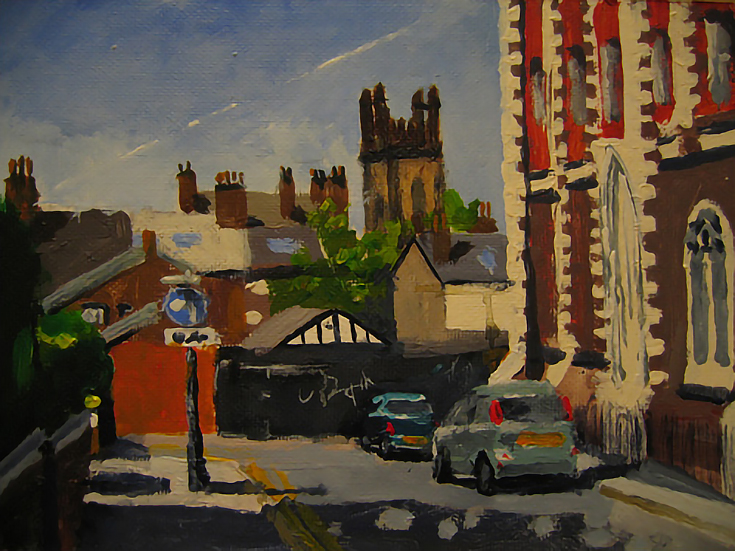In May of this year I began a year-long journey attempting to capture the city of Liverpool in paint. I’m taking to heart the words of French poet and philosopher, Gaston Bachelard, who said:
“Each of us should make a surveyors map of his lost fields and meadows. . . these drawings need not be exact but they need to be written according to the shapes of our inner landscapes.”
And so, I decided to map my own fields and meadows—metaphorically speaking, of course, since this IS a city. Working from life and from the studio, my goal is to finish 15 to 20 small paintings per month. I hope to reach 200, by the end of the project.
Once my goal was set, I wasted no time putting a map on the studio wall. The city was marked off in red, and soon I was putting pins in the spots I had painted. (Yes, I probably looked like Rommel planning a desert campaign.)
Why does this subject matter to me? It matters because the Liverpool I remember is quickly disappearing. I want to paint the scenes that have suffered from neglect, are being overlooked or just taken for granted.
These unsung, yet beautiful aspects of the city are rarely painted, and when these iconic images do appear they are usually used as a backdrop for the life that goes on around them.
I decided was that there are enough people painting the waterfront and pictures of the cathedrals and other landmarks. These places should not be completely ignored, but I wanted my own work to steer away from the iconic in favour of typical Liverpool streets and scenes.
After all, our lives are most often filled with the ordinary. . . shouldn’t we, as artists, be able to find the extraordinary in that? To uncover the sublime in even the most inauspicious of subjects and places?
Personally, I think so. But it does help to paint something you like.
I try to keep each study of the city interesting in its light and shade, reflections in water, weather conditions, time of day, etc. I don’t want painting to become a chore.
Being forced to think of ways to make your next study more interesting than the last can really give a painter focus. And even when one of my paintings doesn’t succeed, every one I struggle with is practice for the next.
Take a minute to think about your own paintings, and goals you could set. . . what would inspire you, focus you, and keep you painting every day?
Got an idea? If so, I’d encourage you to make your own book, or map your own lost fields and meadows. Give it a go, set yourself a project and paint.
To learn more about Steve and this project, please visit stevestrode.blogspot.com.
This post may contain affiliate links.



